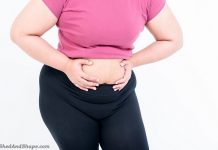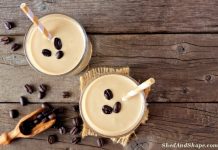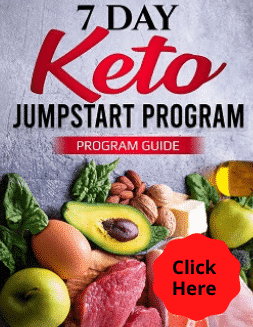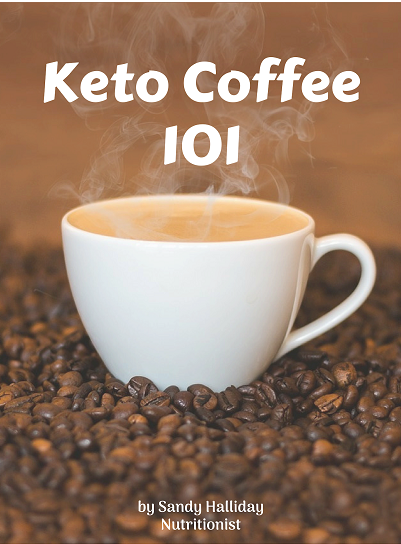The Satiating Diet is one of the latest diet trends that are taking the Internet by storm due to its positive approach to weight and fat loss. Unlike the keto diet, which is pretty restrictive, the satiating diet will allow you to eat any nutrition-rich foods that are “satiating”, hence the name.
These foods fill your stomach easily and satisfy your appetite, leading to feelings of fullness and satisfaction.
According to a report published in Scientific American, the satiating diet has helped people to successfully manage their health, weight loss and fat loss by merely eating foods that are both healthy and satiating. But will this diet work for you and is it really better than keto? Read on to find out.
Related reading: Weight Loss vs. Fat Loss. Which is Best?
What Is The Satiating Diet?
The Satiating Diet involves eating foods that are rich in protein, fiber, healthy fats, dairy products, fruits, and vegetables. These foods are highly nutritious and could improve our overall health and wellbeing.
Others are great for digestion while some are good for the heart. Some of these foods protect the body from the damaging free radicals.
Dr. Shirin Panahi, a nutrition researcher and author of the Scientific American report about the satiating diet, stated that
“The satiating diet includes foods that are high in protein (like lean meat and fish) and high in fiber (like whole grains, fruits and vegetables), as well as healthy fats (like those found in avocados, for example), probiotic-rich dairy products, and capsaicin, the substance that makes peppers spicy (and is known to satisfy hunger).”
The main concept of the Satiating Diet is that all food groups should be a part of your diet. It’s different than the keto diet where your carb consumption is highly restricted. However, when following the Satiating Diet, you need to make sure that the foods you are eating have high nutrient content and are super filling. That way, you will not feel deprived. Dr. Panahi further added that,
“What’s so special about these foods is that each of them possesses specific characteristics that benefit our health either by decreasing hunger, reducing body fat, lowering blood sugar, improving blood pressure or increasing metabolism,”
Just like any healthy eating plans, the Satiating Diet requires dieters to abstain from eating processed foods. It excludes foods that are high in sugar, since they could lead to inflammation and weight gain. Besides, these foods cannot do much in terms of satisfying your appetite.
Related reading: 6 Damaging Effects Of Sugar On Your Body
What To Eat on This Fat Loss Satiating Diet?
By now, you should have an idea what a satiating diet really is. It basically requires eating foods that are not only satisfying but are also good for your health too. To give you an idea, here are some of the foods that you can eat when following the Satiating Diet:
• Protein-rich foods – There are plenty of protein-rich foods that you can eat on a daily basis. These foods help to promote fullness and minimize cravings. Eggs are perhaps one of the most satiating protein-rich foods out there. Other nutritious foods that are rich in protein are chicken breast, lean beef, tuna, turkey breast, and all types of fish.
I don’t see that Dr. Shirin Panahi has specified the types of protein foods but we know that meat and poultry from organic and grass-fed animals is healthier than commercially raised ones. Pastured or organic eggs are more nutritious and therefore more satisfying and healthy than eggs from intensively reared chickens.
As for fish, wild fish is better than farmed fish because they eat a natural diet and according to Dr Perlmutter wild fish contains more protein and is higher in Omega 3 fats fatty acids. Farmed fish contain more pro-inflammatory Omega 6 fatty acids and may contain antibiotic residues and a higher concentration of PCB’s.
• High-in fiber – Just like protein, fiber-rich foods move slowly in our digestive system, which helps to maintain fullness and ward off hunger. Examples of foods that are high in fiber are fruits, vegetables, and whole grains.
For fruits, you can eat bananas, mangoes, oranges, and apples. Generally, dark green vegetables tend to have higher fiber content in them so you need to eat more of these. Beans and legumes are also high in fiber, and so are whole grains.
Should we eat gluten?
On the subject of grains Dr David Perlmutter, brilliant neurologist, maintains that a gluten-free, and low-carb diet is crucial for cognitive function and long-term health. You can read more about this in his book Grain Brain, The Surprising Truth about Wheat, Carbs, and Sugar–Your Brain’s Silent Killers .
There are other health experts like Dr Fasano who think that the majority of people if not all should avoid gluten in their diets. There is concern also that the toxic chemical glyphosate in the herbicide Roundup, that is used to spray grains, gets into our food and is causing the increase in celiac disease in older people.
• Healthy fats – If you’re familiar with the keto diet, then this should be easy. Avocados are the most popular source of healthy fats. They contain about 77% of fats, yet the main fatty acid in the fruit, which is known as oleic acid is associated with various health benefits. This fatty acid can also be found in olive oil.
Other good sources of healthy fats are cheese, dark chocolate, fatty fish, nuts, seeds, chia seeds, coconuts, and coconut oil.
Related reading: Coconut Oil Is Not Poison But Sugar Is!
• Probiotic products – Probiotics are beneficial bacteria that offer powerful benefits to our body. The British Journal of Nutrition has also found that probiotics may help to reduce leptin, an appetite-regulating hormone, which is why these foods may help to suppress food cravings. Some examples of probiotic foods are yogurt, sauerkraut, tempeh, and kimchi.
Fat Loss:Does the Satiating Diet Really Work?
The satiating diet is much easier to follow than the keto diet, which many are unable to maintain long term. But will this diet really work for fat loss?
A 2017 study that was published in the British Journal of Nutrition asked a group of participants to follow either a “normal diet” or the satiating diet. The normal diet consisted of eating 10 – 15% protein, 55 – 60% carbs, and 30% fats. On the other hand, the satiating diet consists of eating 20-25% protein, 45-50% carbs, and 30-35% fats.
The study found that those who followed the Satiating Diet lost more body fat and weight and they felt fuller compared to those who followed the “normal diet”. The satiating group was able to successfully stick to their diet, which many find difficult to achieve when following a very restrictive diet like keto.
But this small study, which consists only of 69 male participants, but still statistically significant, may not be enough to conclude that the satiating diet is really effective and can work for everyone. Nevertheless, the Satiating Diet sounds like a smart way to eat when it comes to improving our health and wellbeing, whether you want to lose weight or not.
Conclusion
Almost every day, you get to read about a new diet online that promises fast fat loss and weight loss but not all are healthy. The Satiating Diet is among the latest diets that are gaining popularity on the Internet and for good reason.
There are not yet enough studies done to validate claims but we know that the foods included on the diet are healthy.
As of now, we can’t be sure if the Satiating Diet will be successful in the long run or if it can really live up to its claims. But regardless of the diet that you choose to follow, what’s important is that you follow a healthy balanced diet, something that will fulfill your body’s nutritional requirements.










